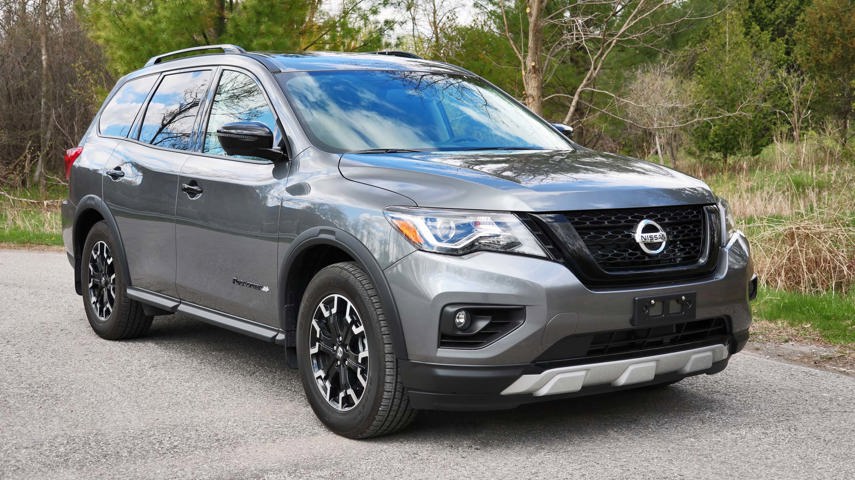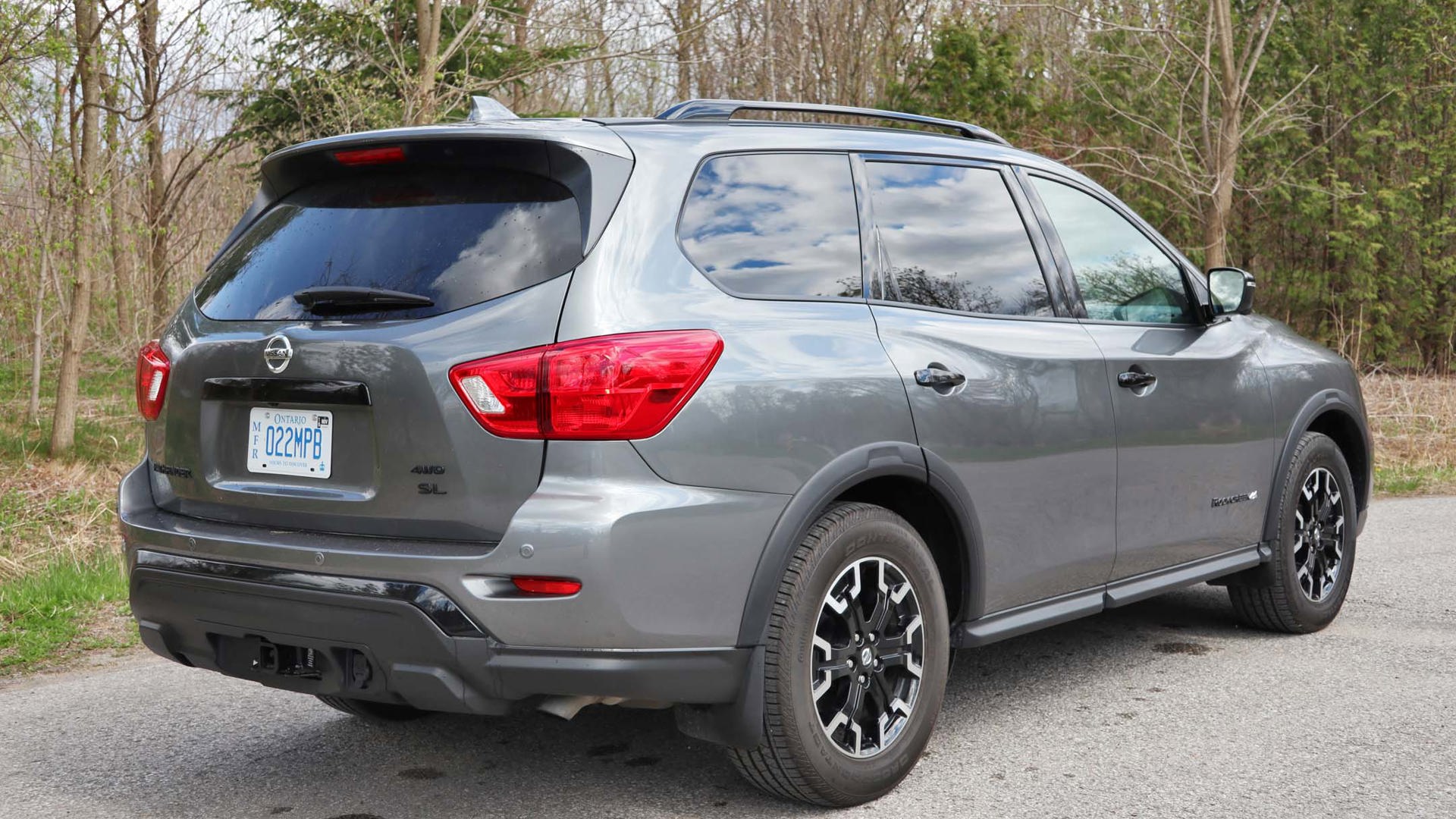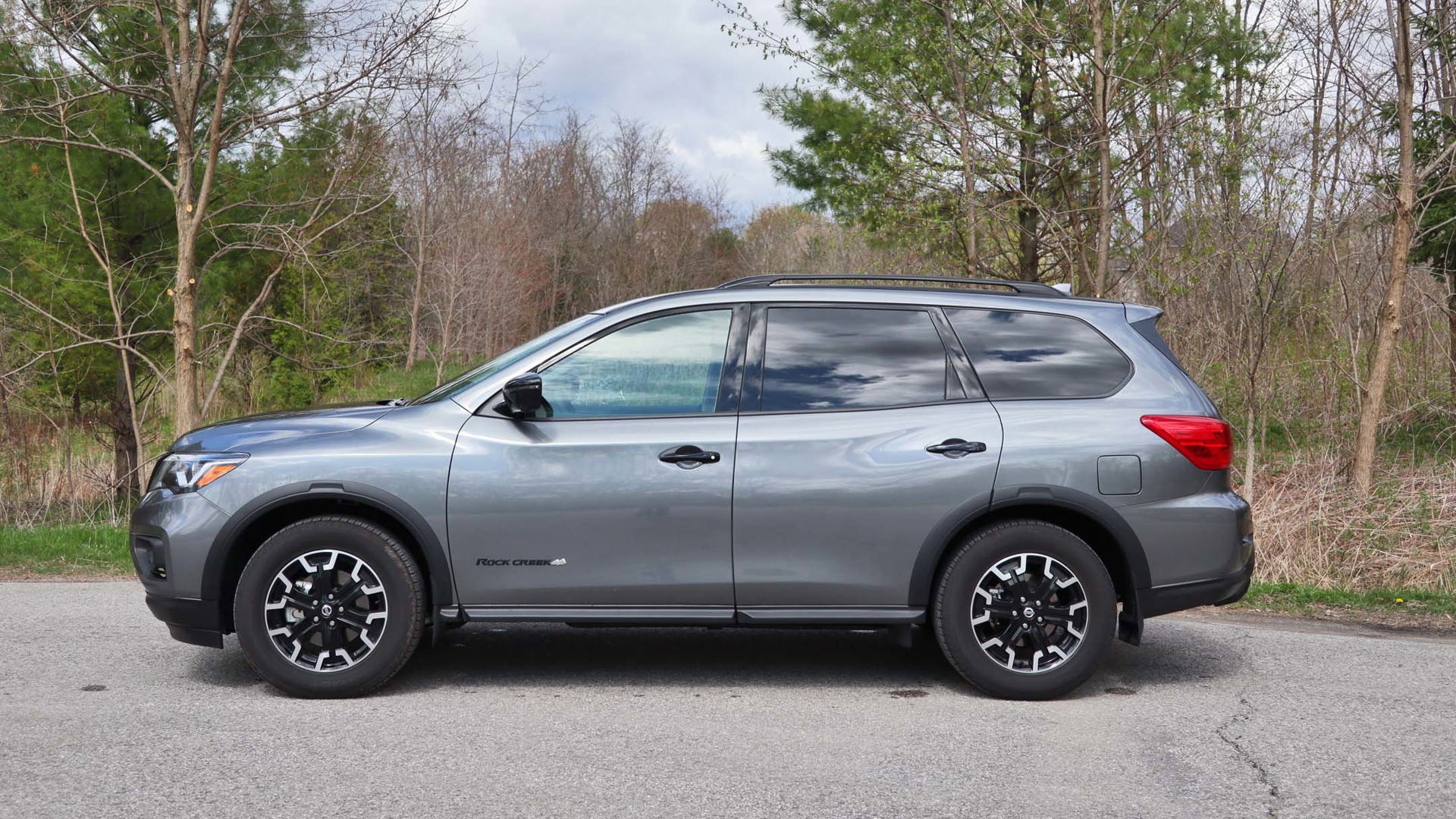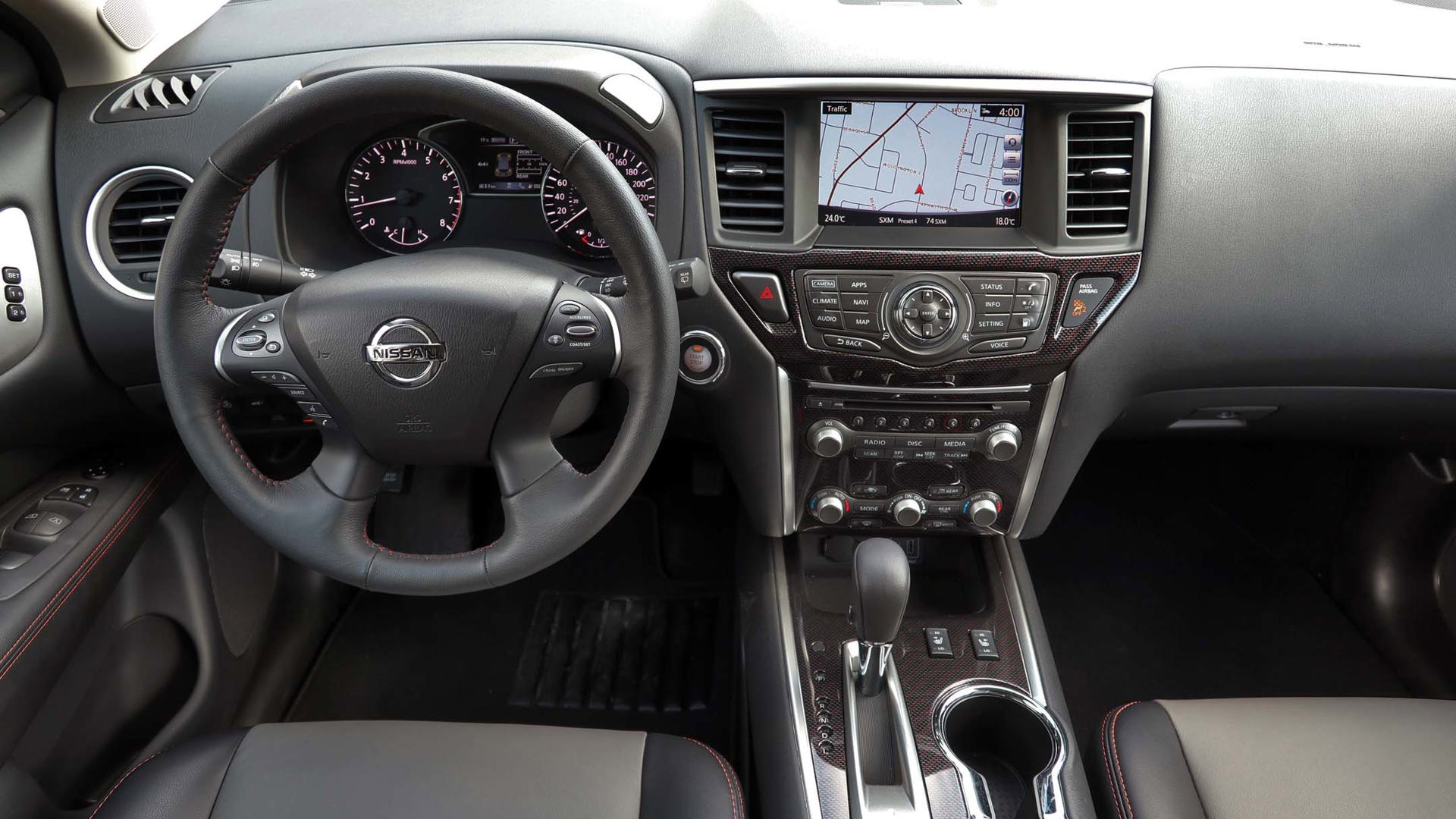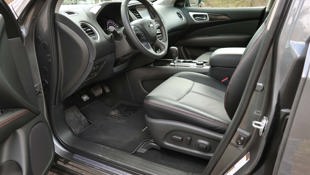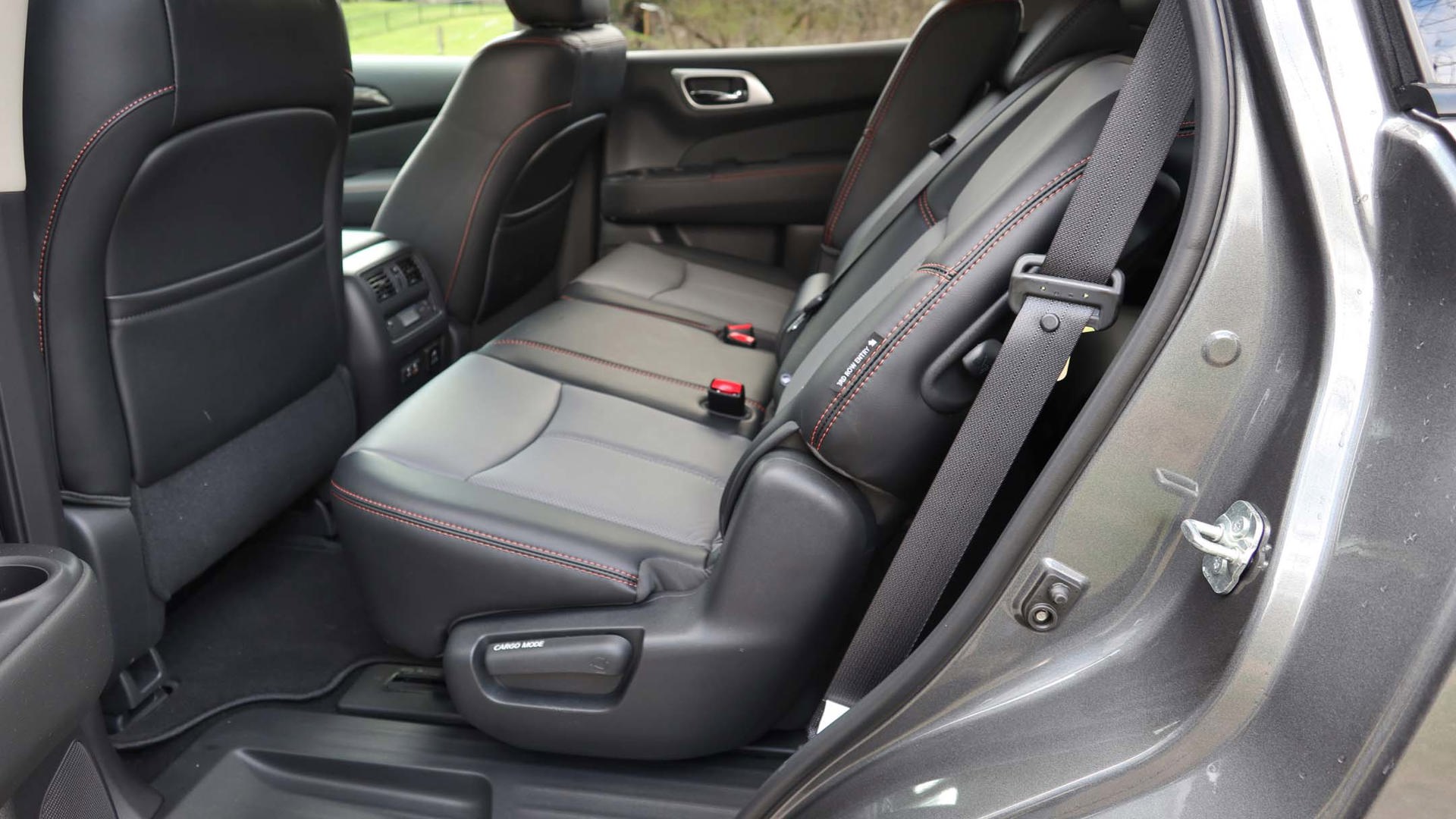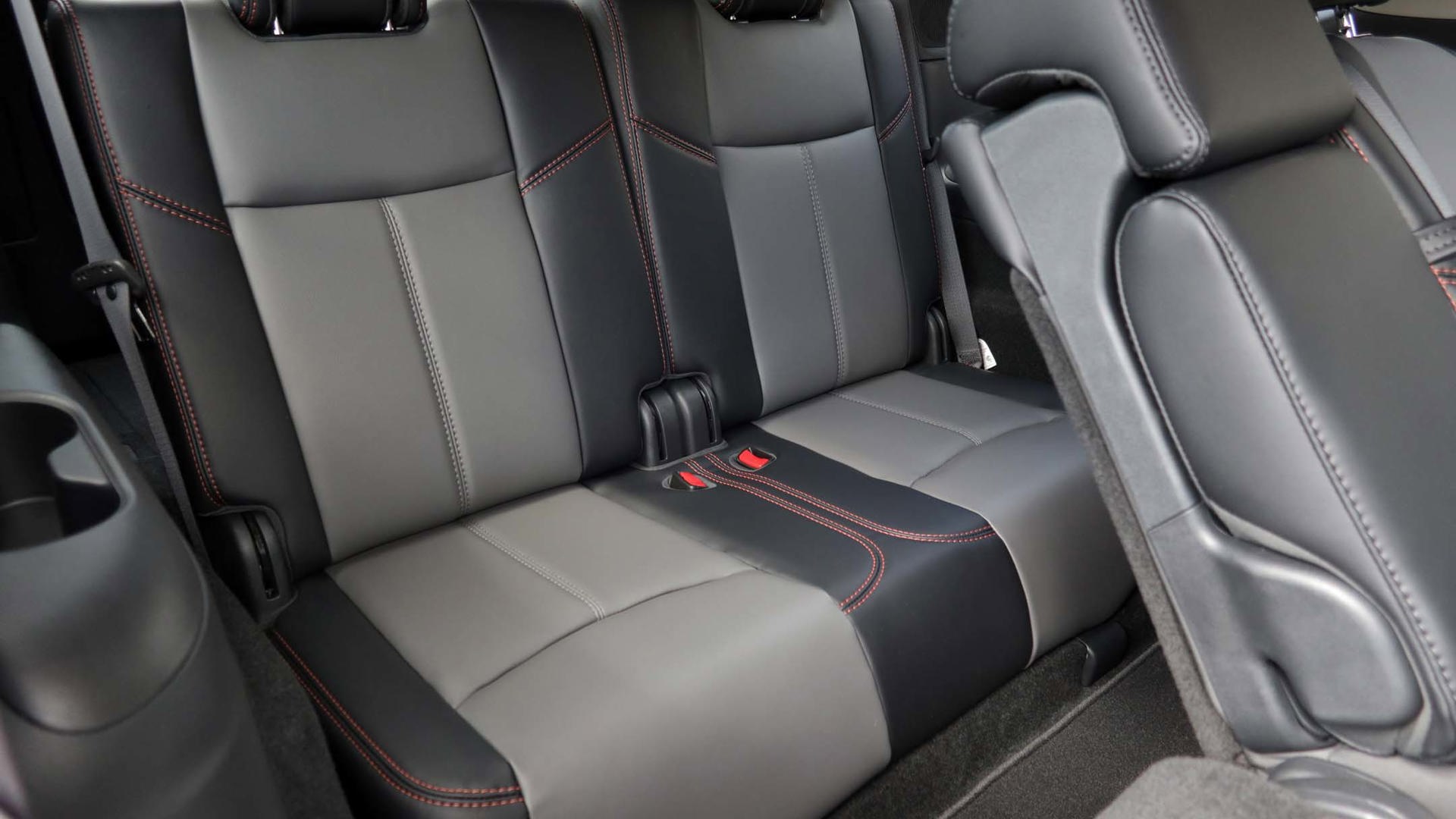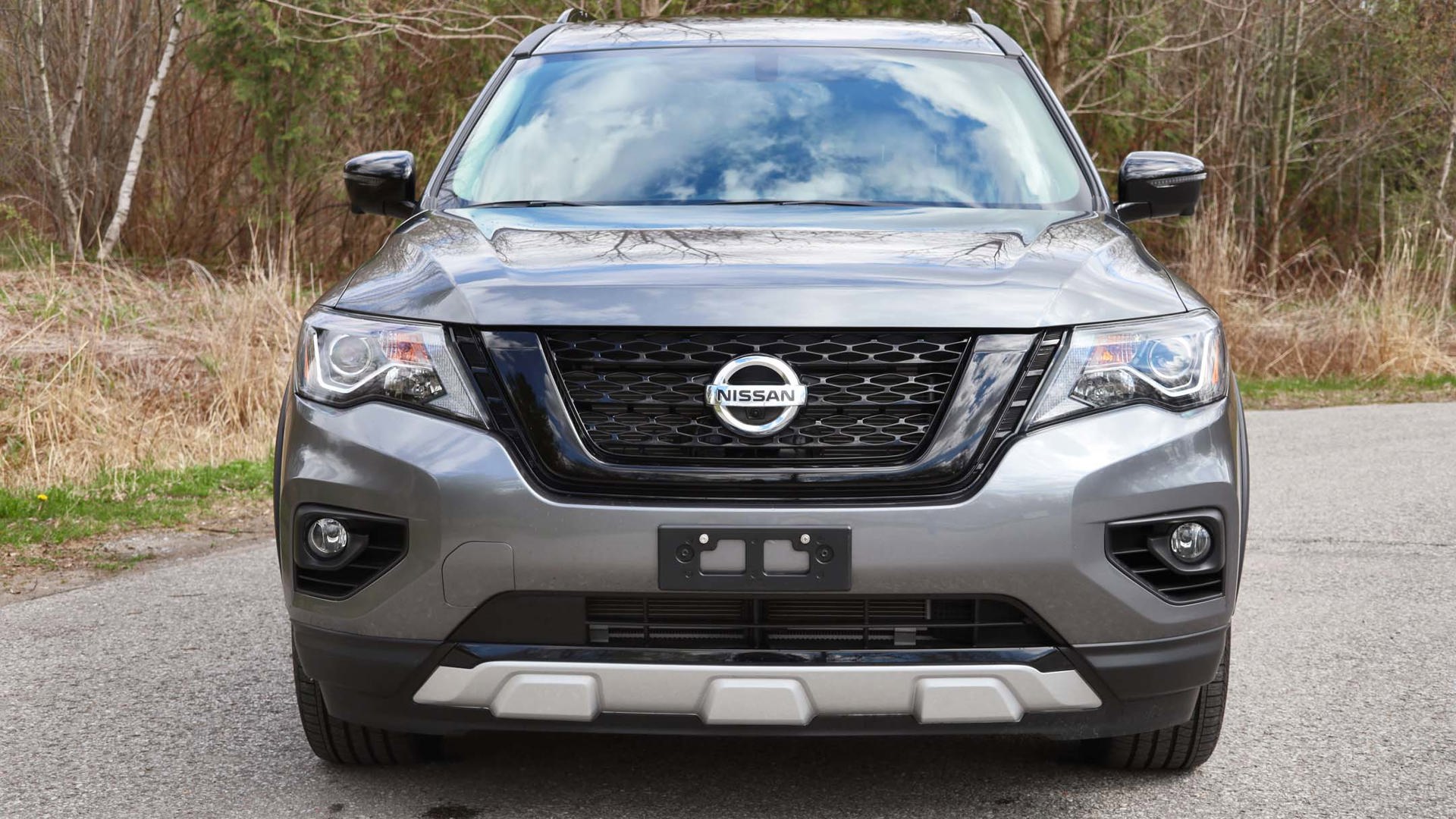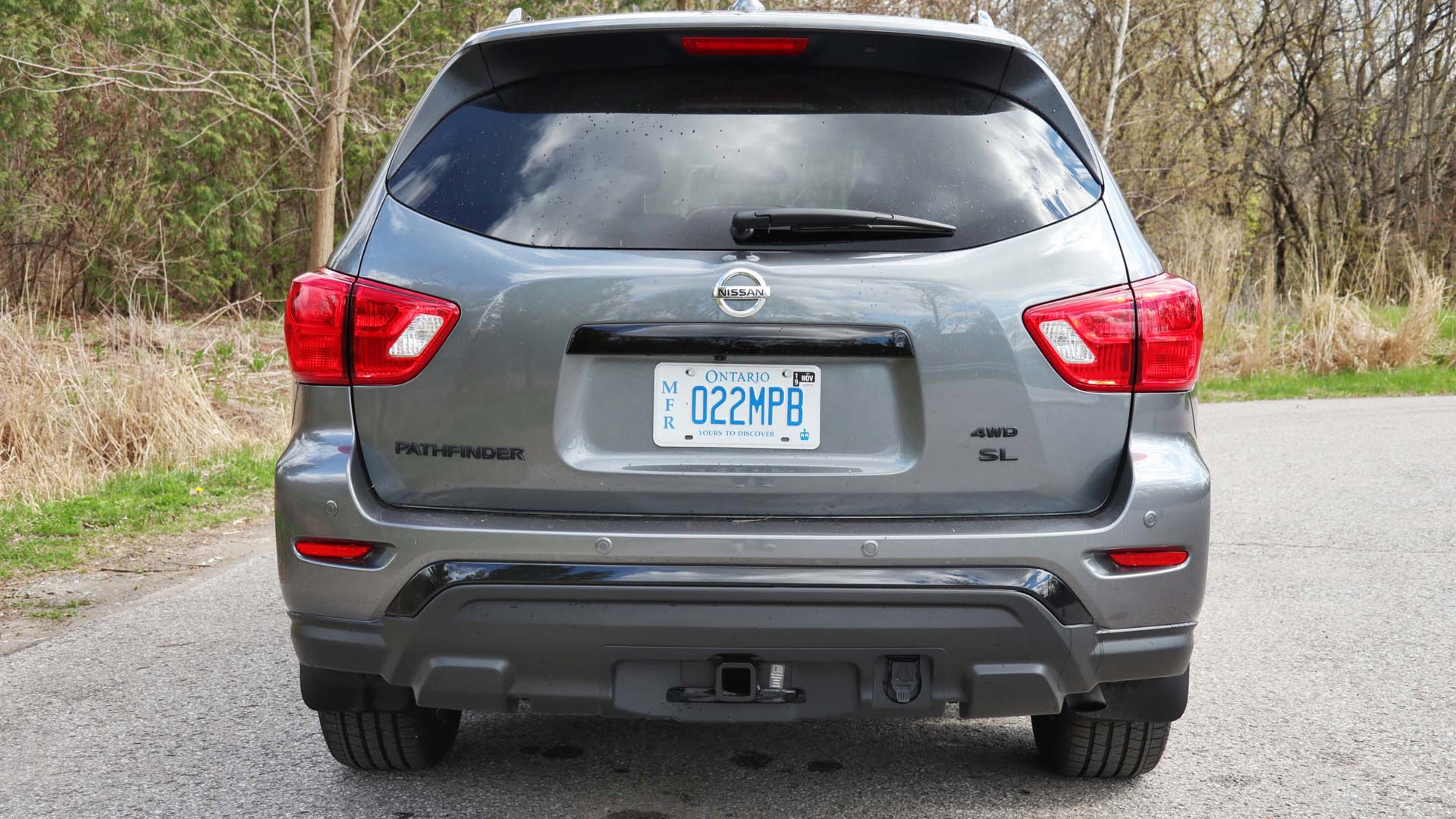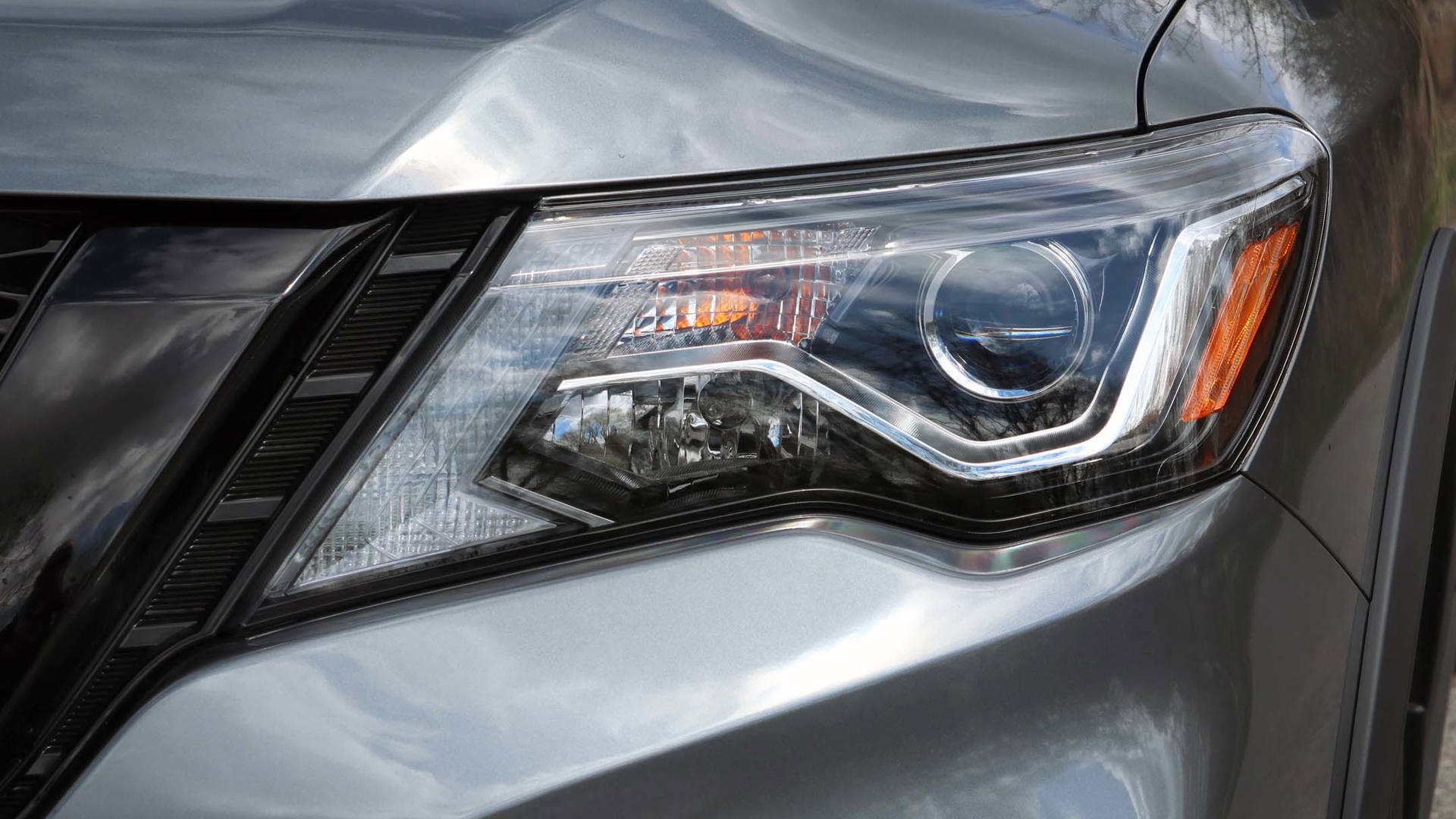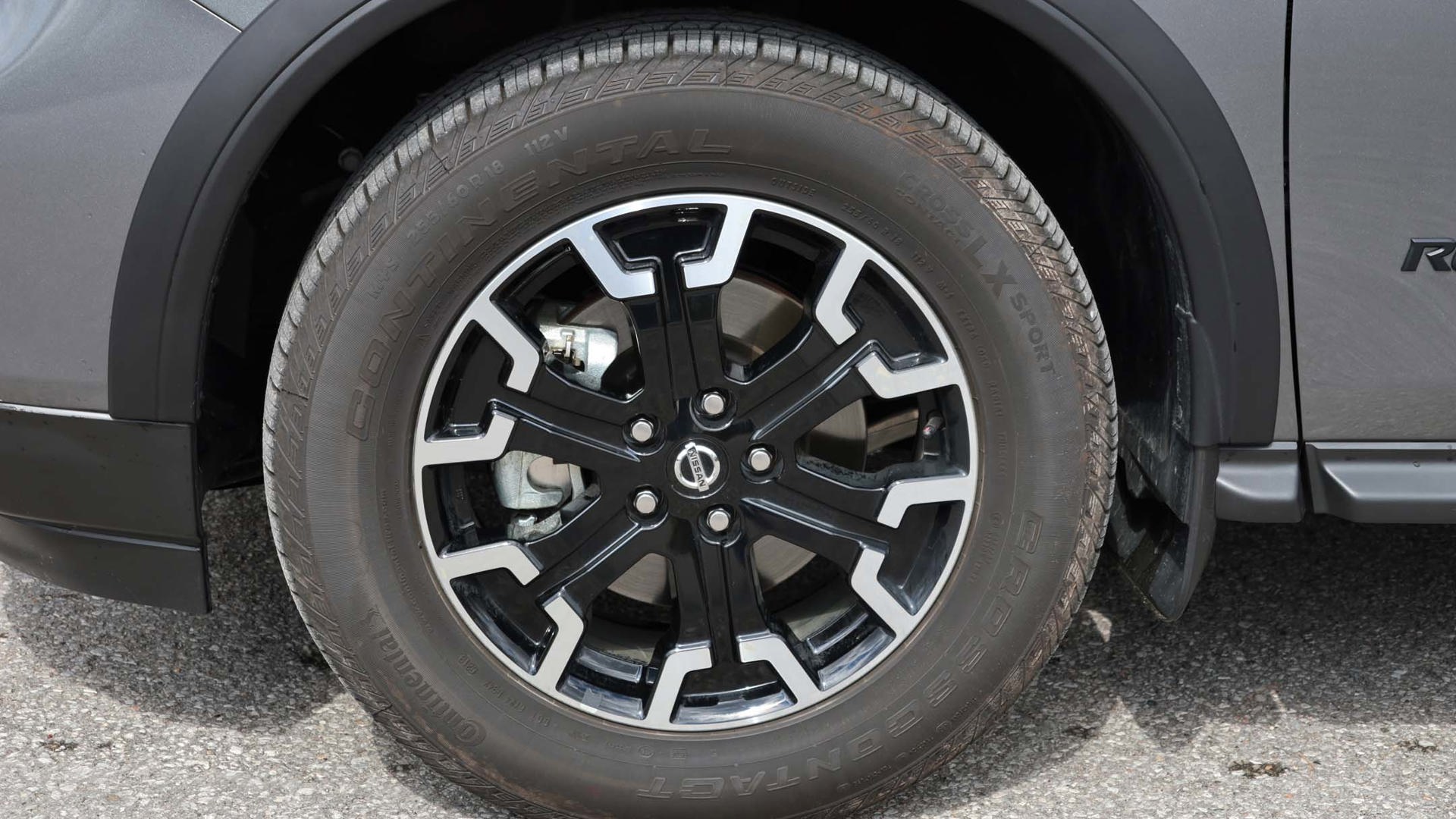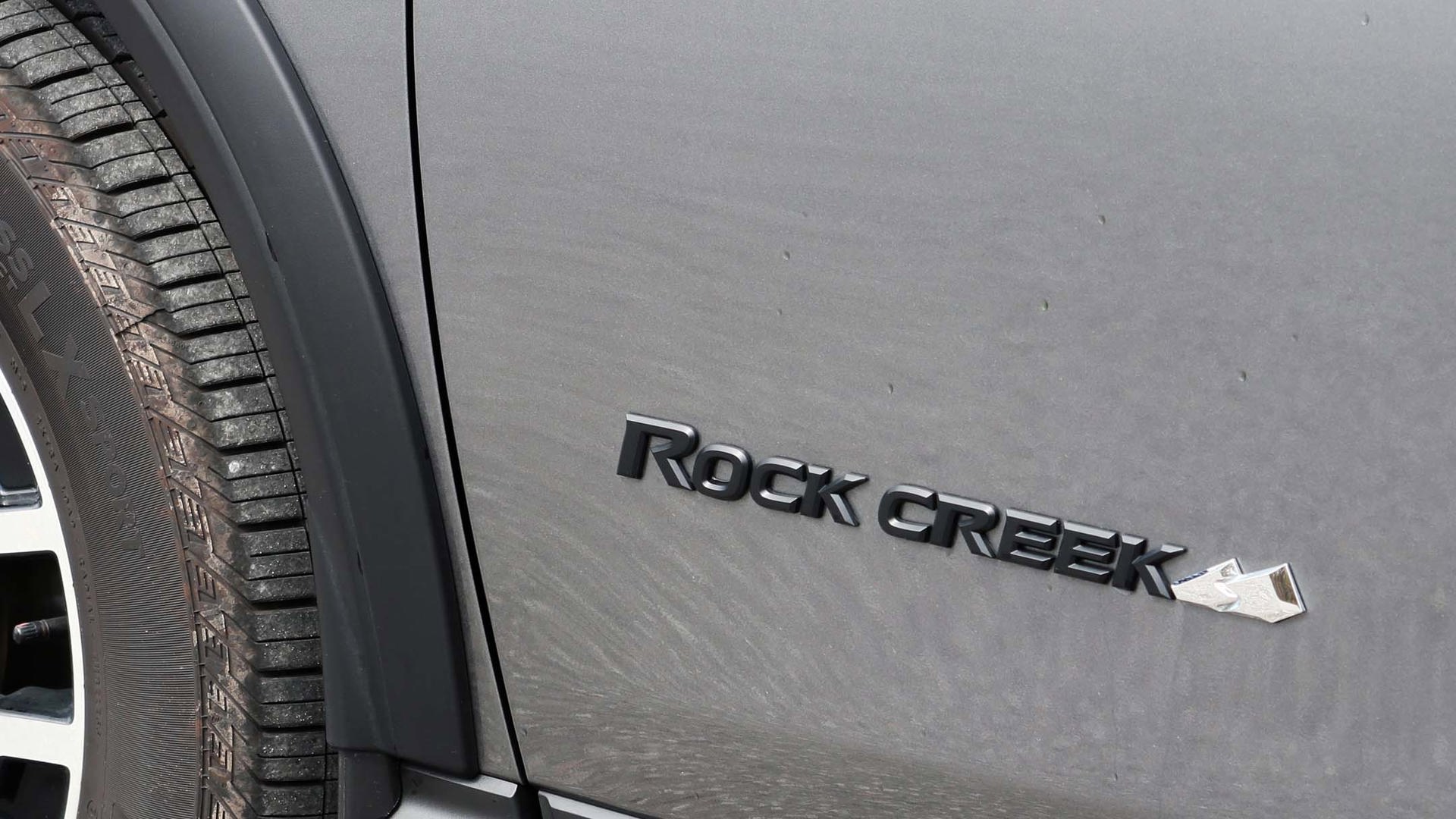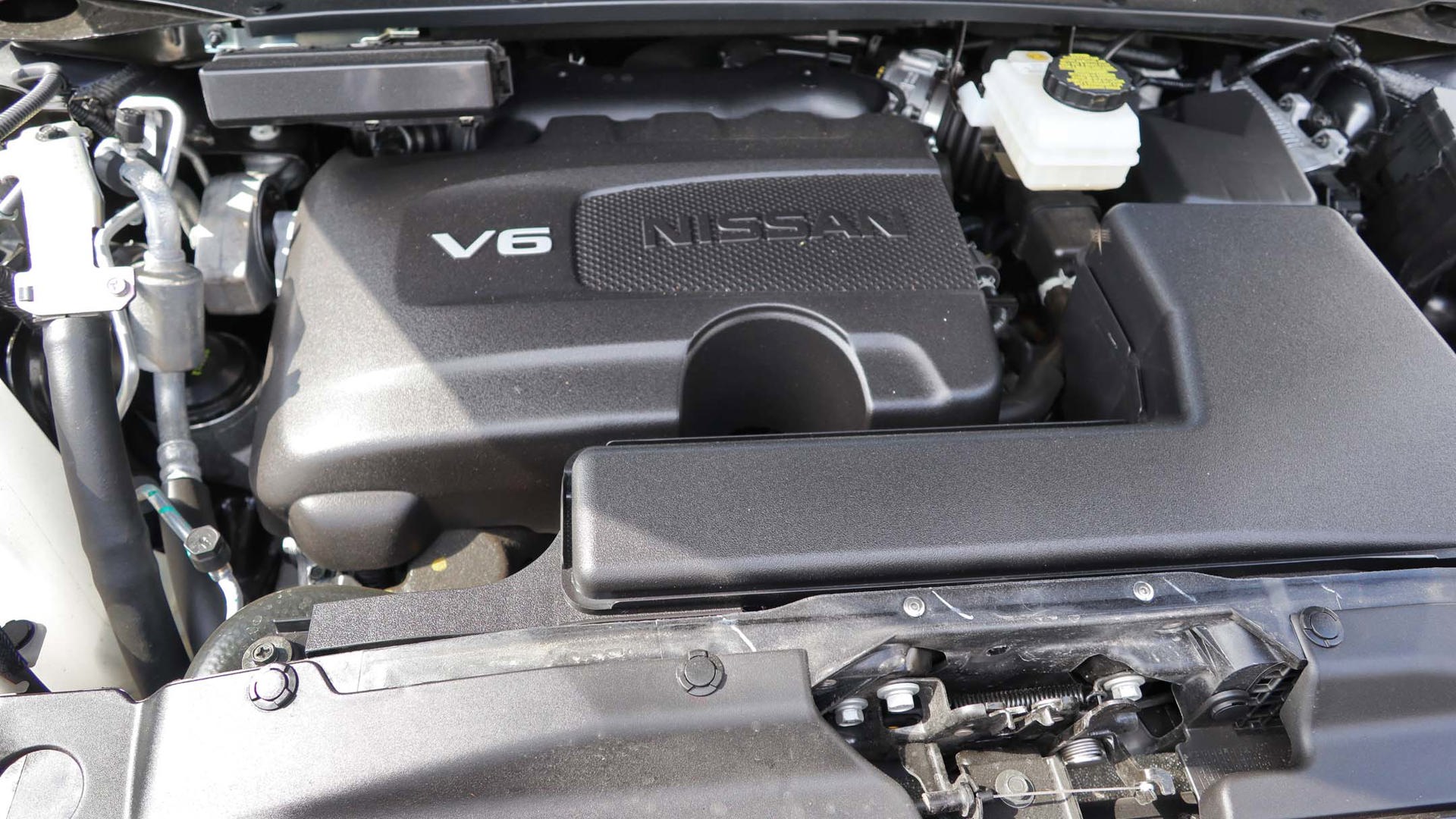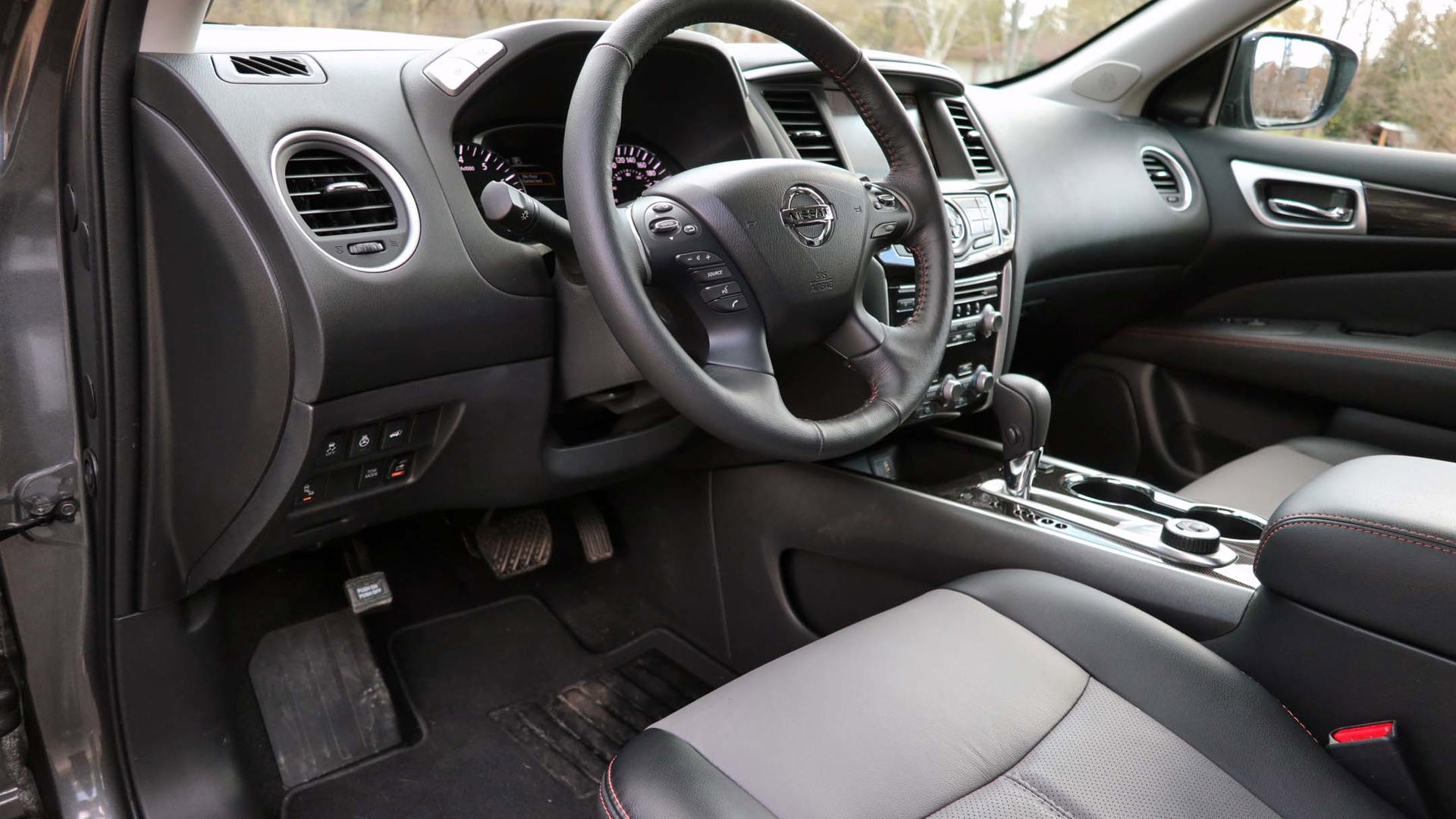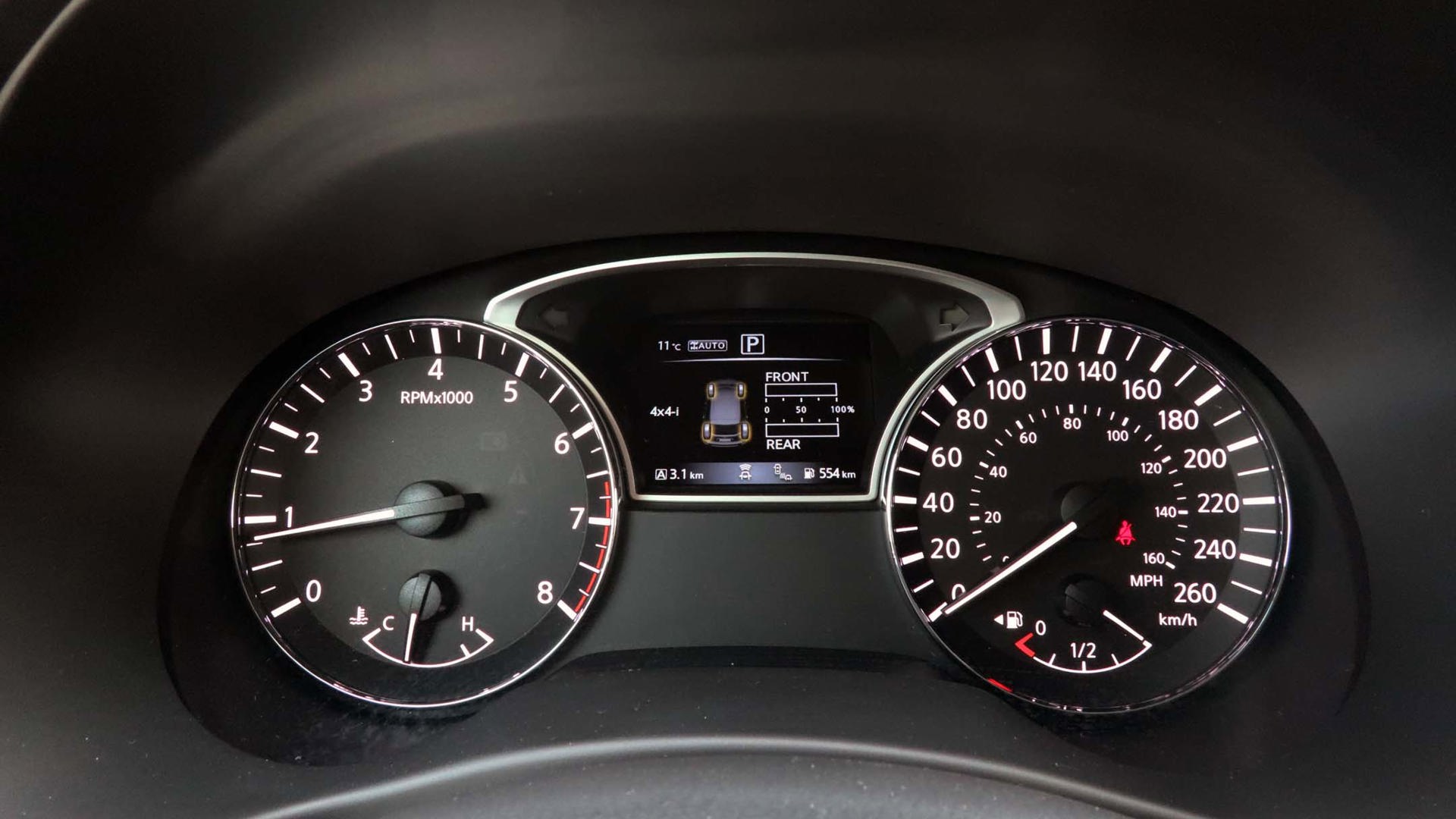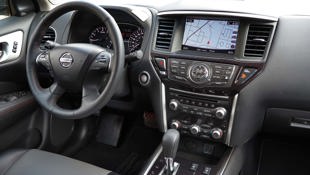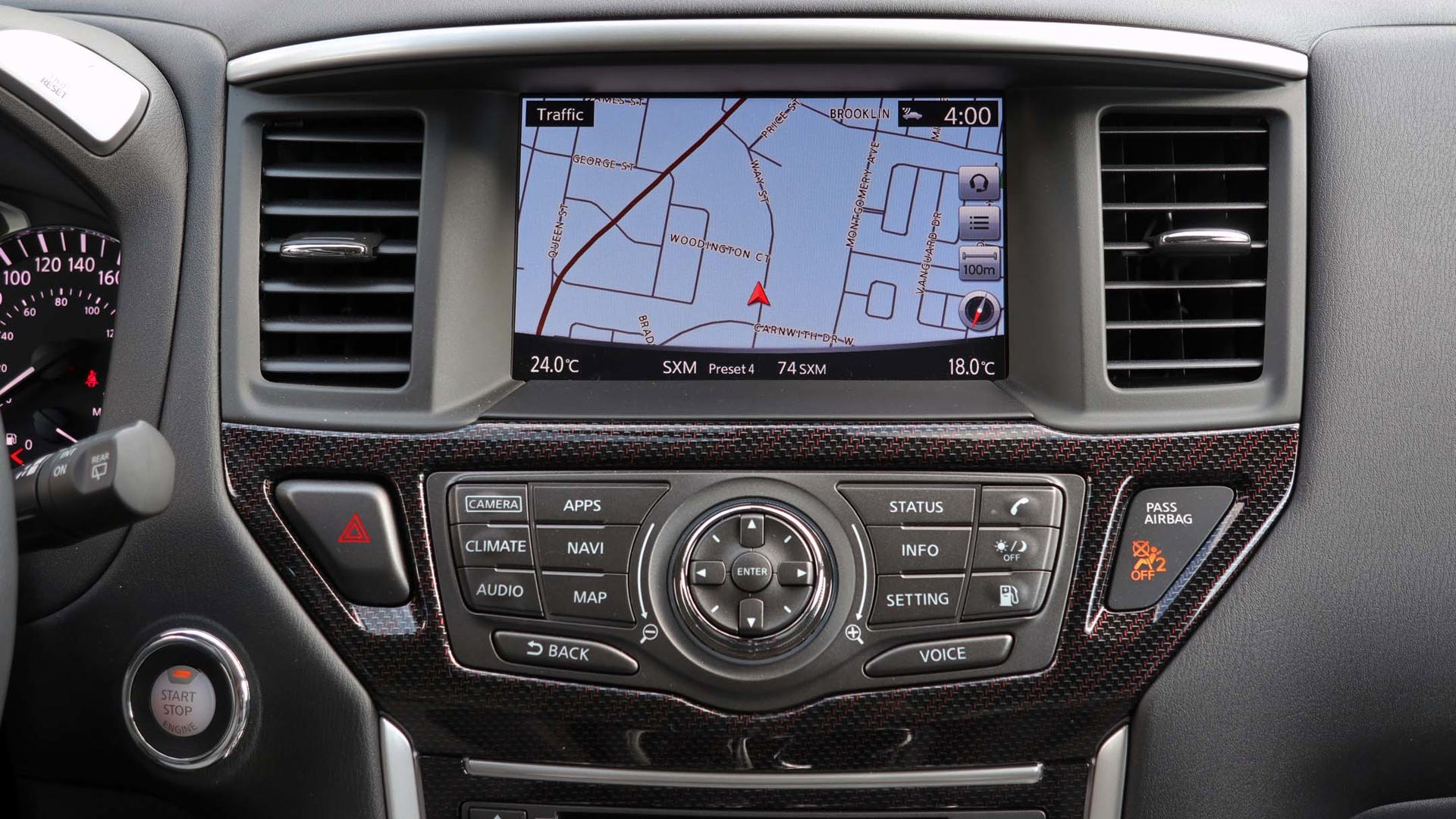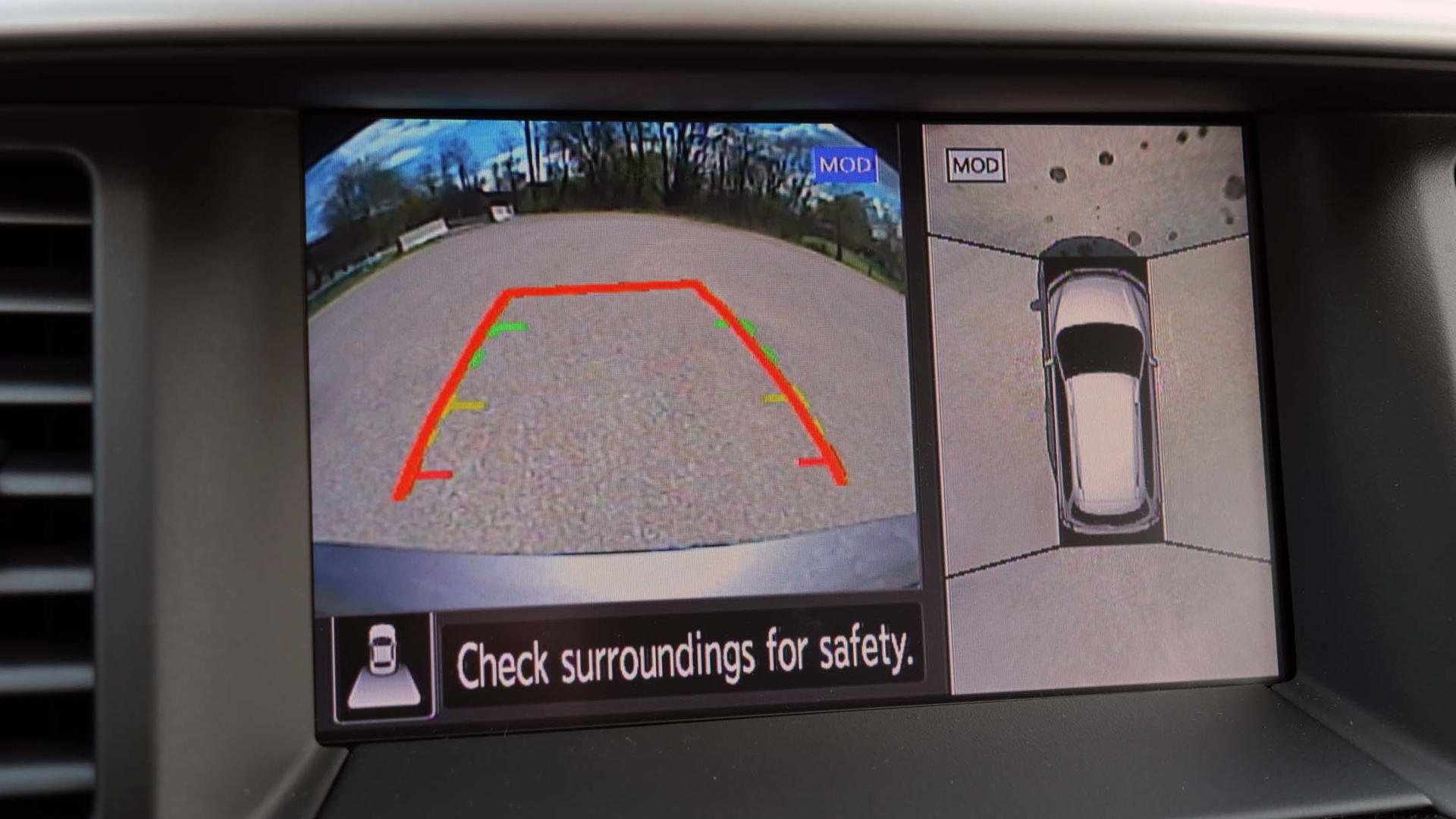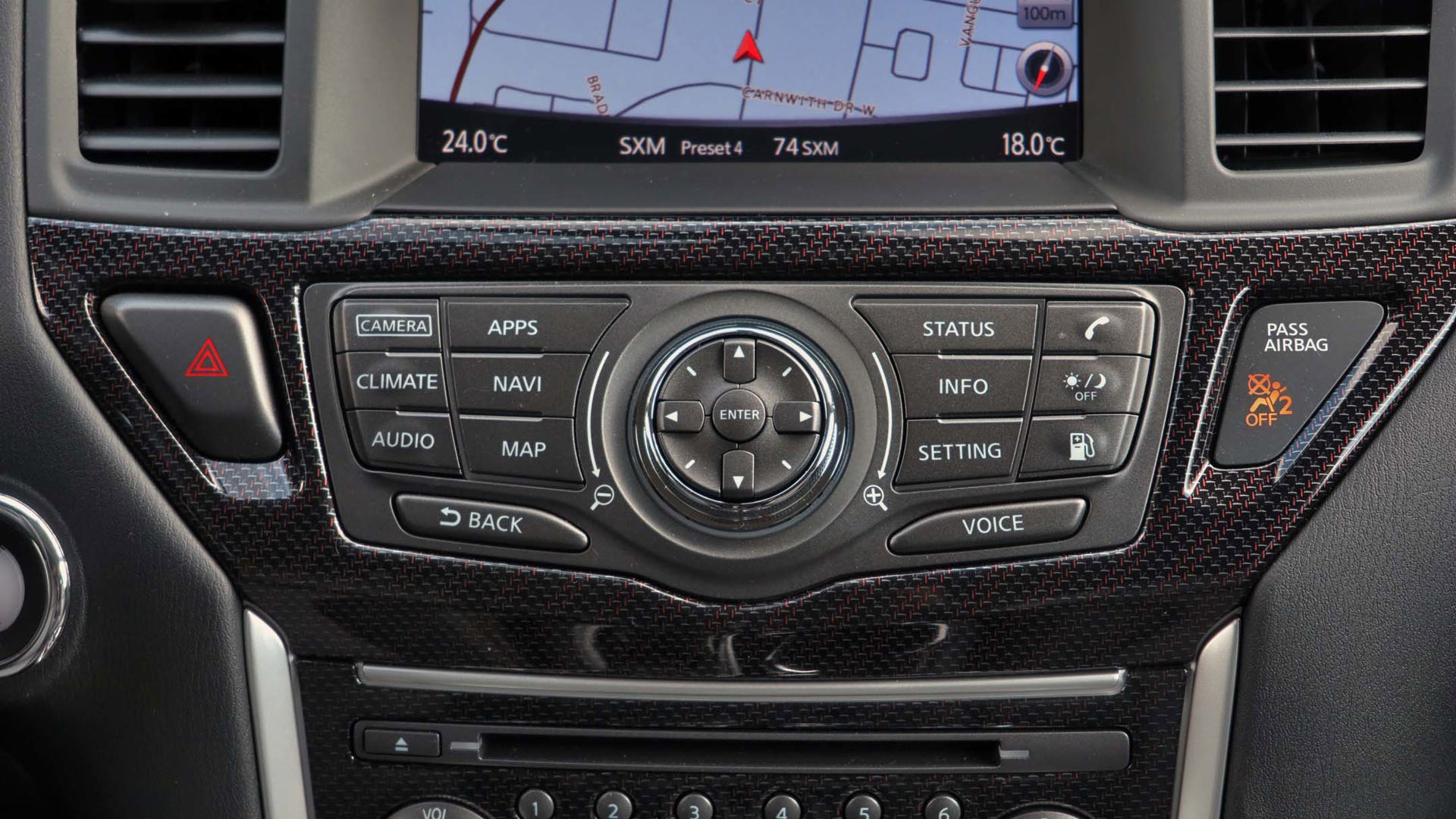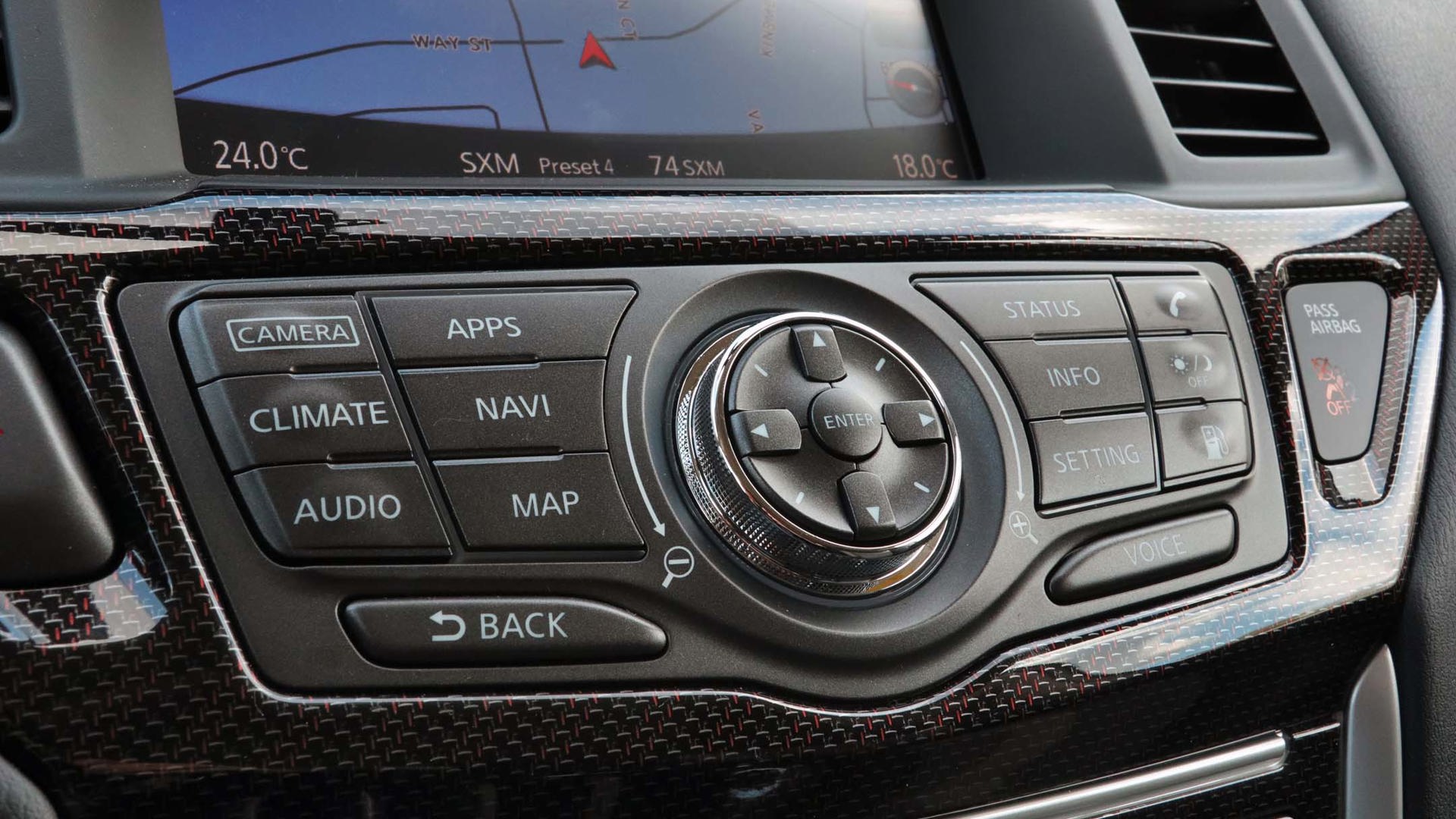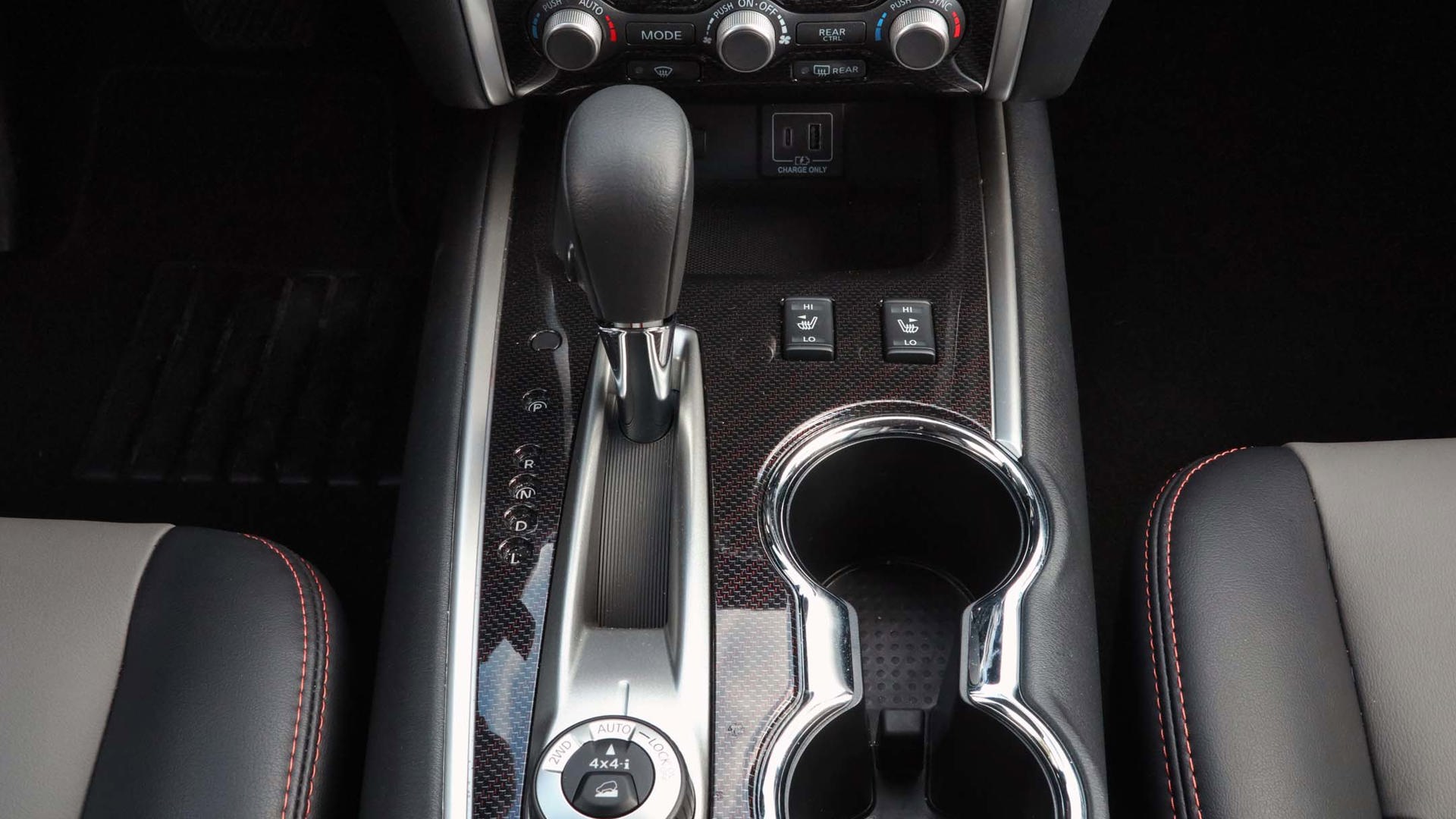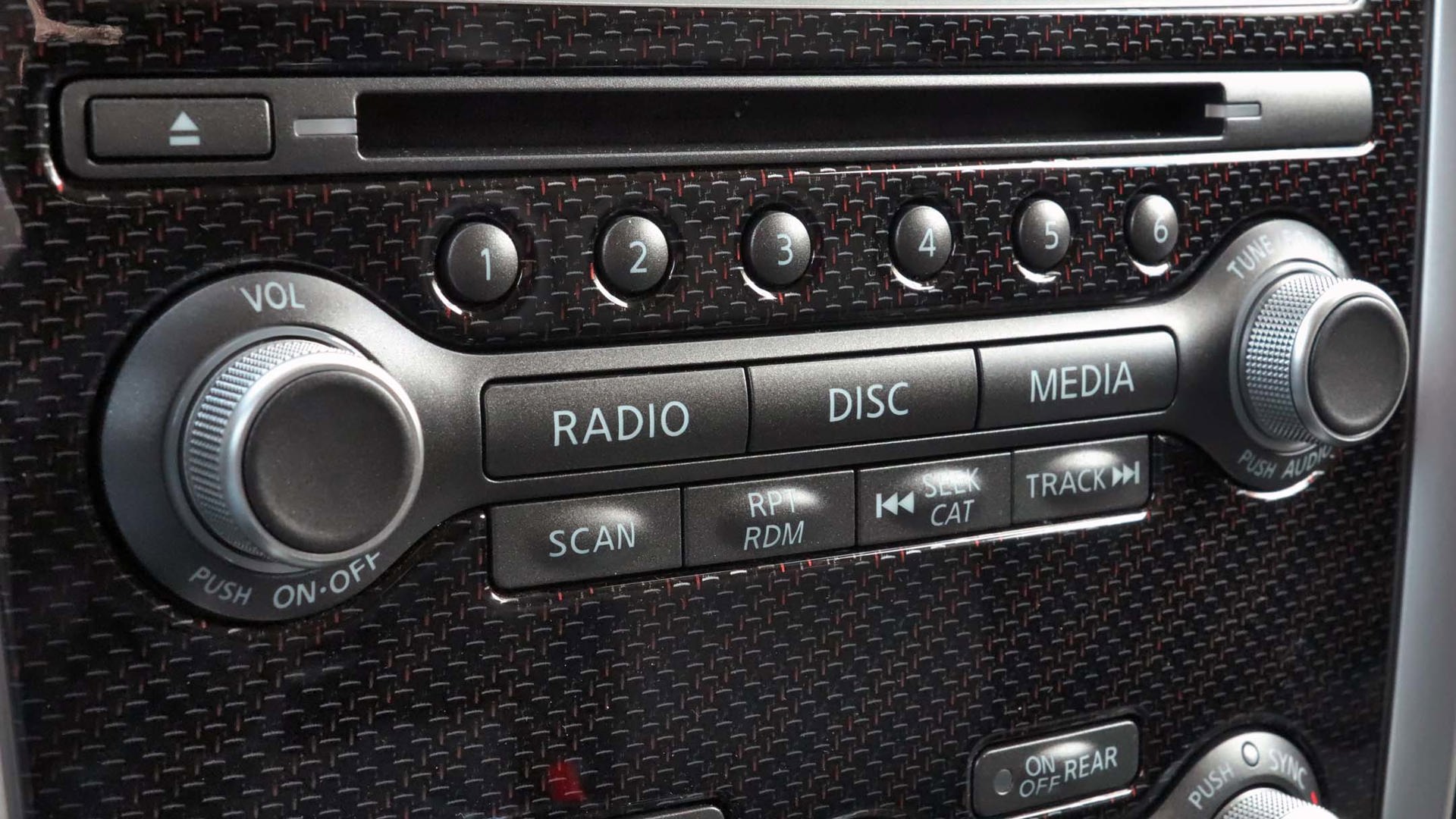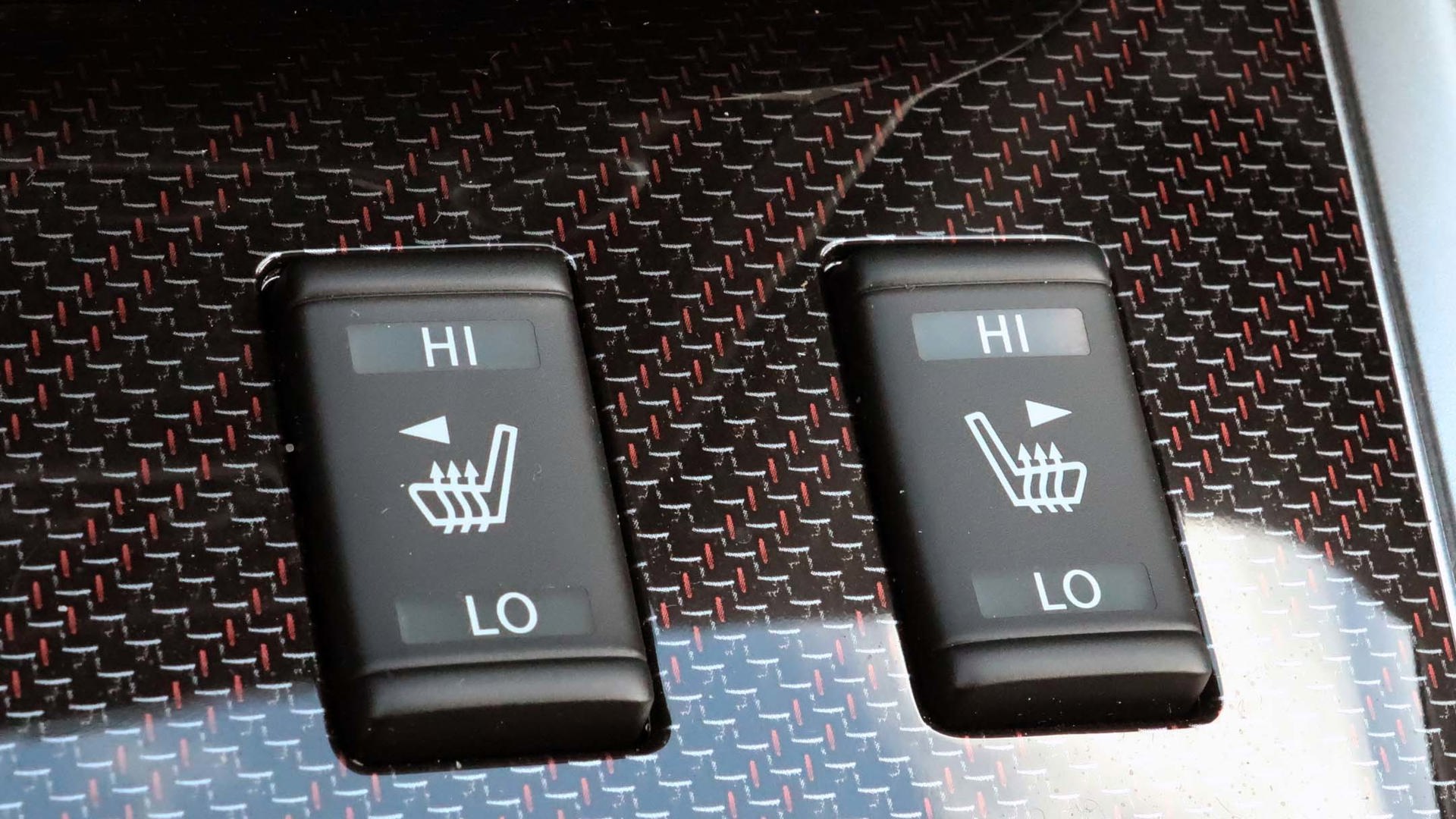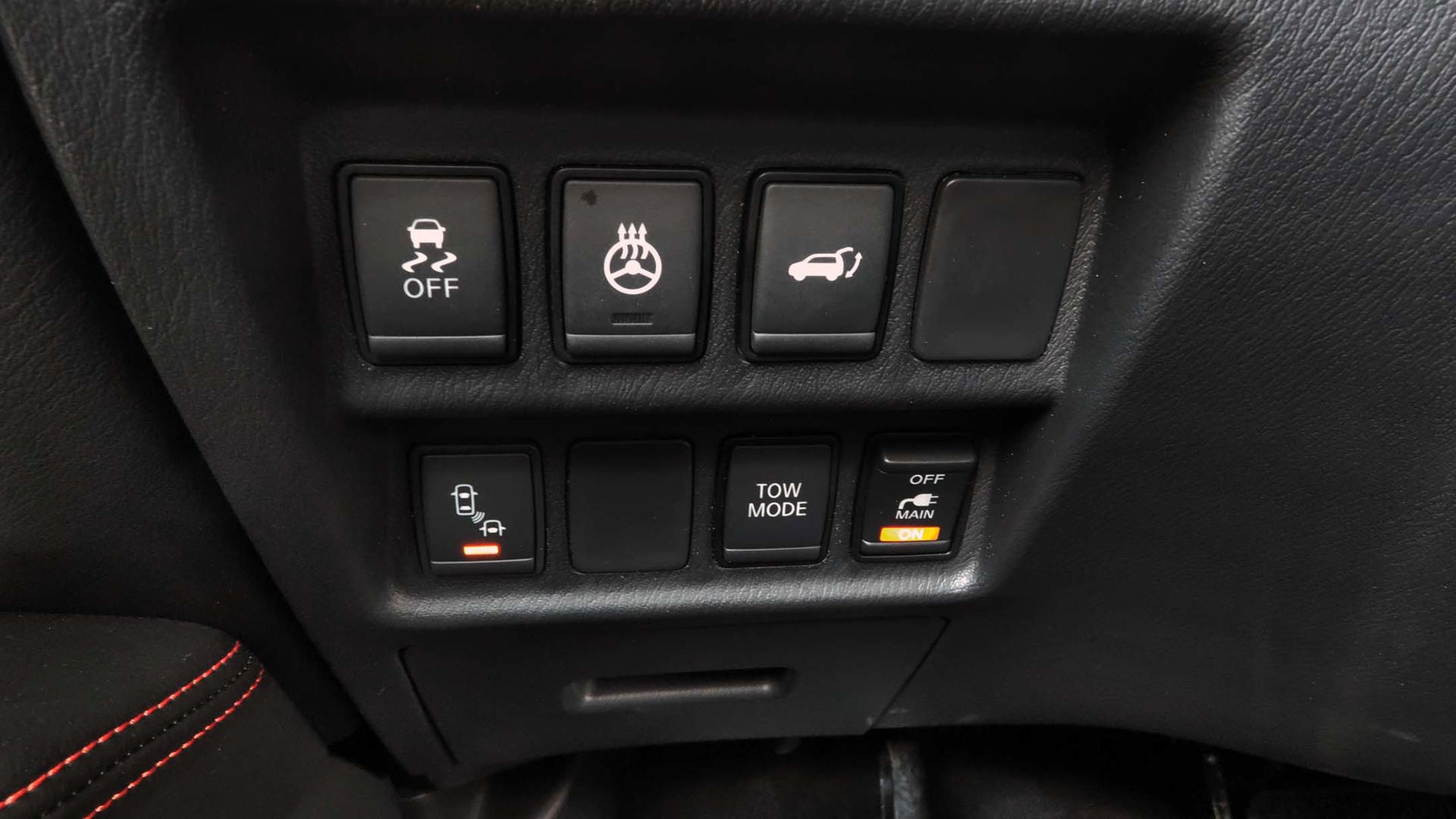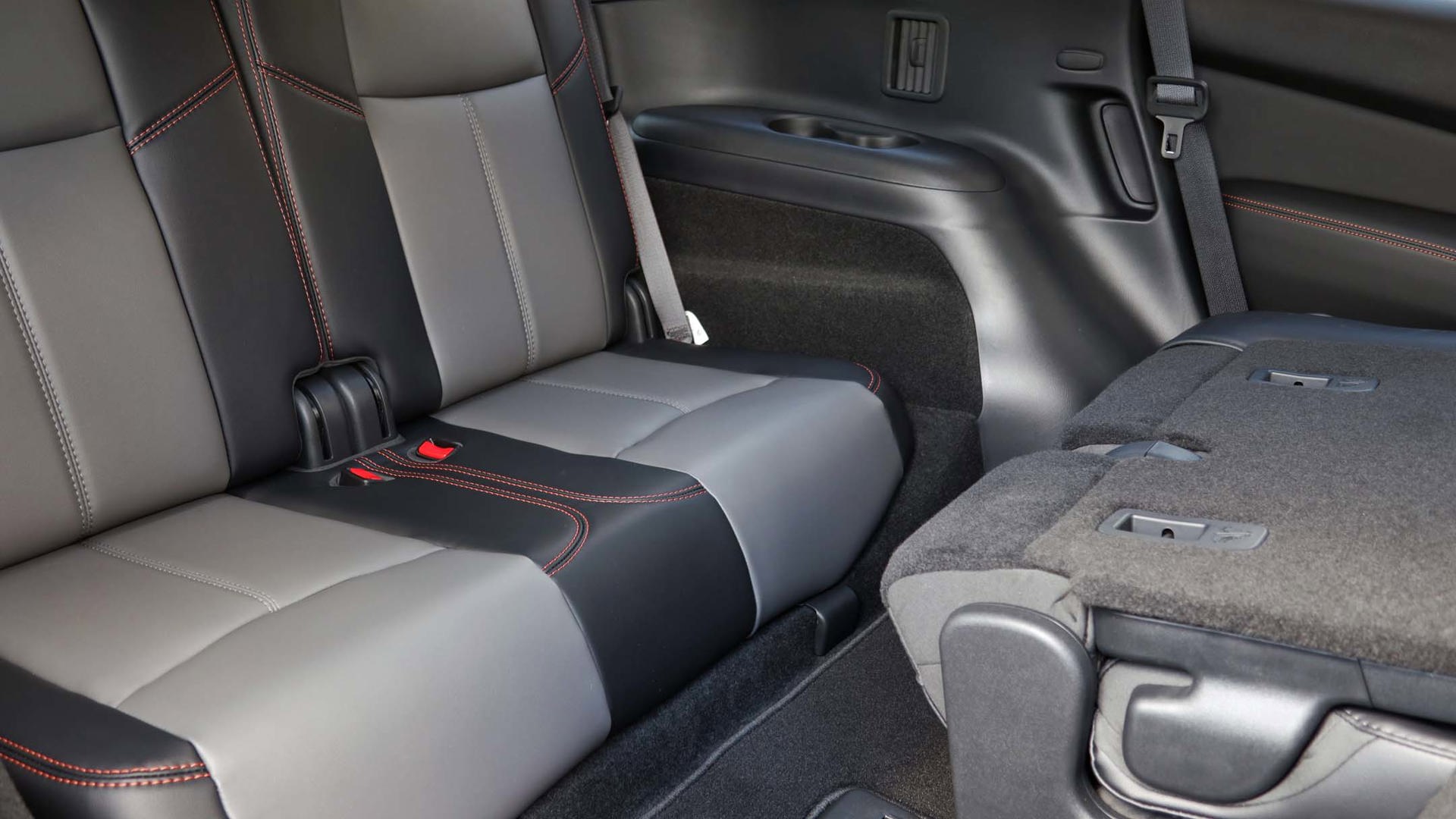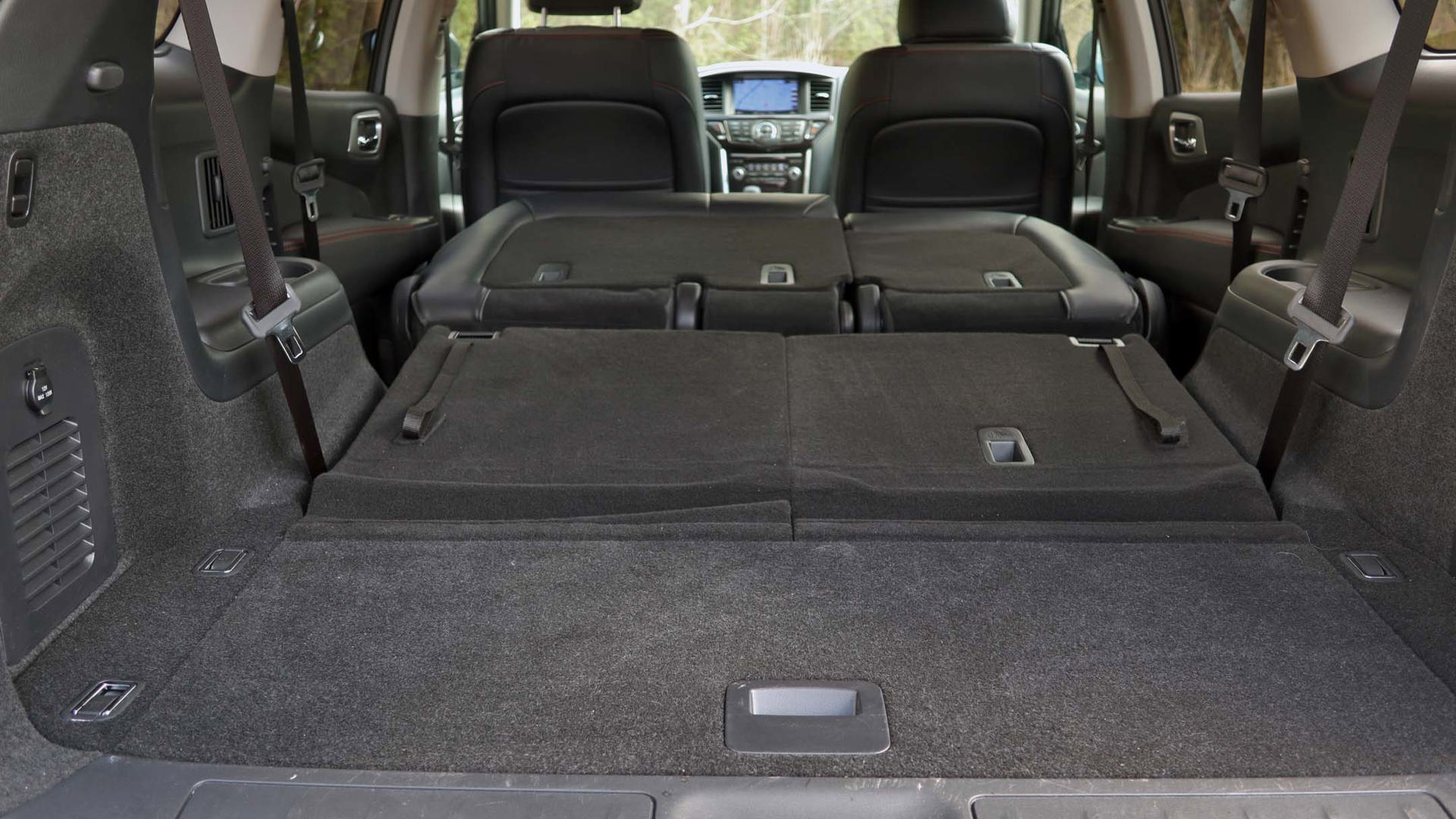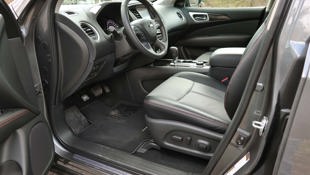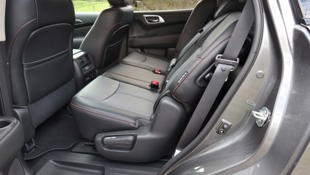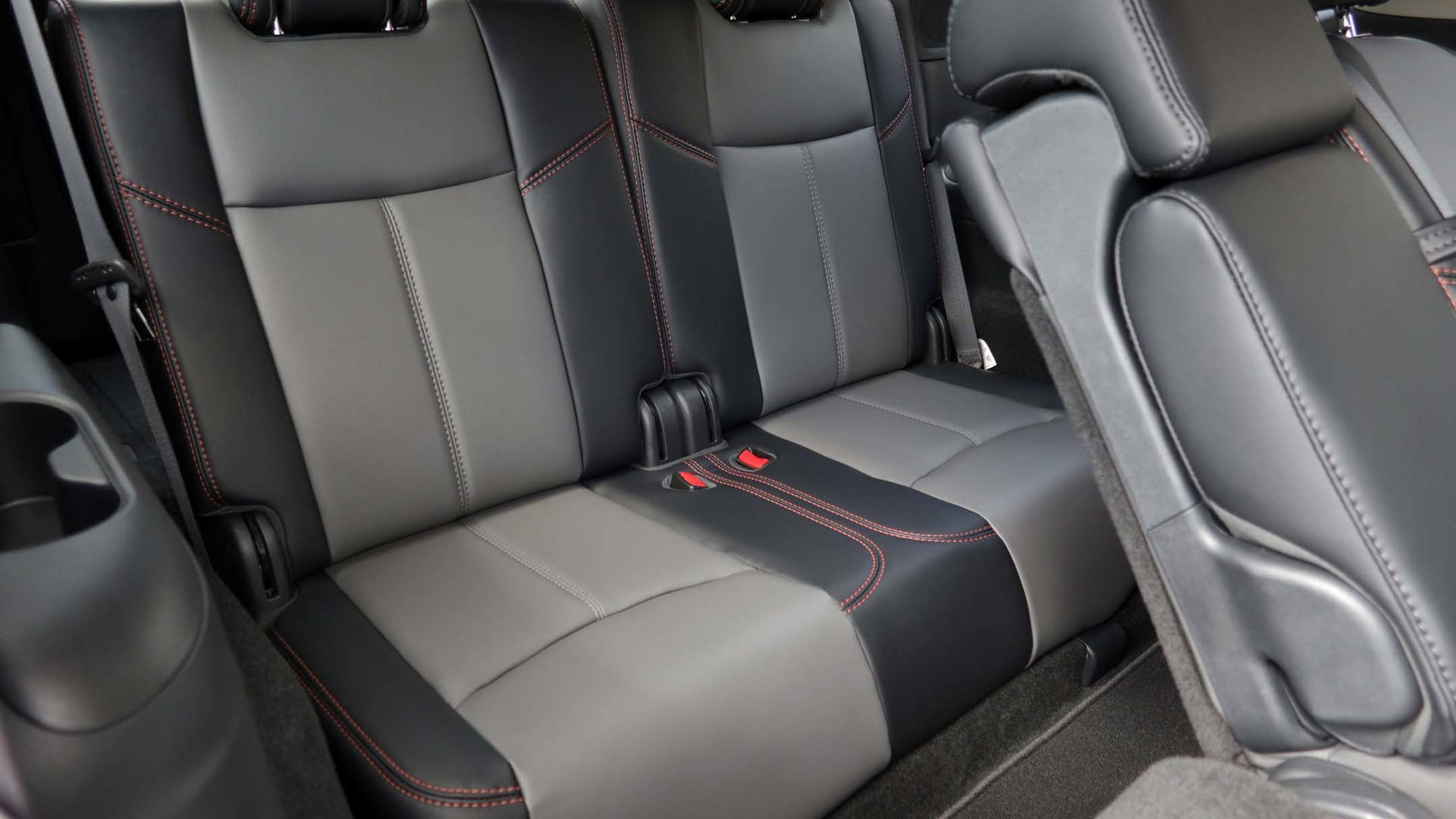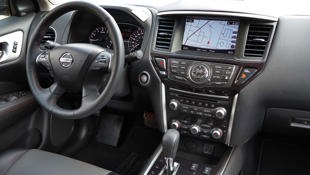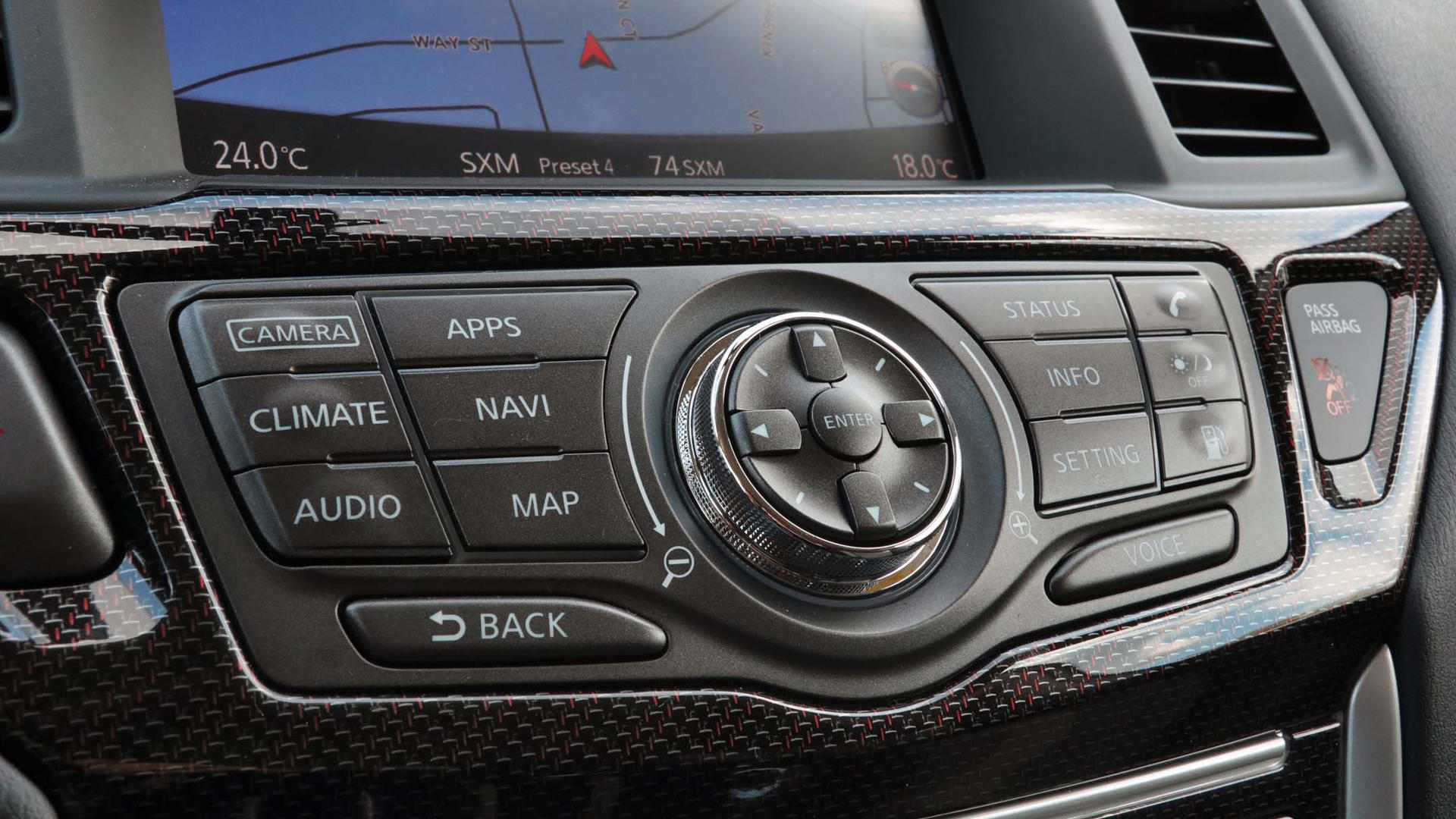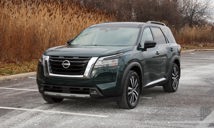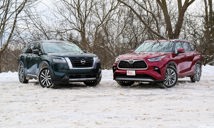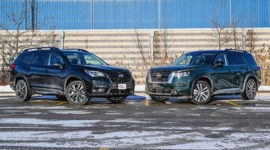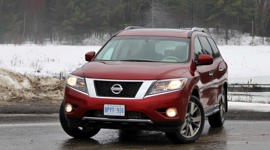 AutoTrader SCORE
AutoTrader SCORE
-
STYLING7/10
-
Safety8/10
-
PRACTICALITY8/10
-
USER-FRIENDLINESS8/10
-
FEATURES8/10
-
POWER8/10
-
COMFORT8/10
-
DRIVING FEEL6/10
-
FUEL ECONOMY8/10
-
VALUE7/10
As the speed of new technology accelerates, it doesn’t take long to get left behind. Nissan’s Pathfinder received its last major update for 2014, but five years is now an eternity in this business. The 2019 Nissan Pathfinder is still practical for those who want a three-row SUV, but it’s showing its age.
New for 2019 is the Rock Creek Edition, a trim package for the SV and SL trim levels with all-wheel drive. I had the SL Rock Creek, which rang in at $47,190 with the package. The option consists of a long list of exterior and interior styling cues, plus a trailer hitch. Nissan says the name connects it to outdoor-adventure types, as well as to the Pathfinder’s “proud rugged heritage”, although it’s been a while since this model was a true body-on-frame 4x4 off-roader.
Styling: 7/10
Imposingly handsome at the front, somewhat mundane at the rear, and with a side profile that looks a little saggy with that front-to-rear body line, the Pathfinder has a fairly straight roof line that maximizes headroom all the way through the three rows.
The Rock Creek Edition adds a boatload of dark-hued trim, including the mesh grille, door handles and mirrors, fascia, badges, and unique 18-inch wheels. Taste is subjective, of course, but I like a little more chrome on my vehicle, especially against my tester’s Gun Metallic grey paint (a $135 add-on). Should you feel the same way, you can get the Pathfinder sans Rock Creek and with bright accents.
Safety: 9/10
The Pathfinder rates a “Top Safety Pick” from the IIHS. All models come with emergency front braking, while all but the base trim level come equipped with adaptive cruise control, blind spot monitoring, and rear cross-traffic alert.
However, lane-keeping assist isn’t available. Without that, Nissan’s new single-button ProPilot system that integrates it and the adaptive cruise control into a semi-autonomous driver assist system isn’t offered on the Pathfinder.
Practicality: 8/10
For people-hauling, you can’t beat a minivan, but the Pathfinder does a fairly good job of emulating one. All models are seven-passenger, with three seating positions across the second row and two in the third row. There’s a fair bit of space behind the third row for cargo (with a cubby under the floor), and both rows fold flat if you’re bringing home a lot of stuff – with a handsfree power liftgate on the SL and Platinum levels. If that isn’t enough for all you’re carrying, all Pathfinder models can tow a maximum of 6,000 lb.
Up front, there’s an open cubby ahead of the gearshift lever for small items, plus a covered console box and door pockets that’ll hold a water bottle.
User Friendliness: 8/10
Getting into the back of a three-row SUV often involves contortions that most yoga masters can’t manage, but the Pathfinder is different. Its second-row seat tilts, its cushion lifts up, and it slides ahead so far that it leaves a super-wide space for third-row access (although a handle on the back pillar would be appreciated for adults to pull themselves up). If there’s a child seat latched into the passenger-side second-row seat, that chair will still move enough to give you access to the third row without removing it.
Those second-row seats also recline, and slide back a considerable distance to maximize legroom if there isn’t anyone in the third row.
Up front, the Pathfinder shows its age, with climate and stereo controls clustered into bezels shaped like dog bones, which weren’t all that stylish when they were introduced, and which now look even more dated. That said, I do like their simplicity. The infotainment system is touchscreen, but there are hard buttons and a controller for quick access to most functions.
Features: 8/10
All Pathfinders come fairly well-equipped. Front-wheel-drive models are limited to a base S trim, while all-wheel trim levels are the S, SV, SL, and Platinum.
All trims include automatic headlamps, roof rails, 8-inch touchscreen, Bluetooth, push-button start, satellite radio, tri-zone automatic climate control, and Easy-Fill Tire Alert, which chirps the horn when you’re filling a tire and you’ve reached the right pressure. Also standard is rear door alert, which sends a warning (including a horn beep) if you open the back doors during your trip, but don’t open them again after you park – reminding you to check for any children or pets you might have forgotten.
My SL added mirrors that tilt in Reverse, panoramic sunroof, hands-free power liftgate, leather upholstery, driver and passenger power-adjustable seats, and a Bose premium audio system. However, for those who like to integrate their phones, neither Apple CarPlay nor Android Auto is available on any trim level.
Power: 8/10
The Pathfinder carries a 3.5L V6 that makes 284 horsepower and 259 lb-ft of torque. Even though it has a lot of vehicle to move around, it does a decent job under most driving conditions, and only gets gruff – and just a little bit wheezy – when you really put your foot down. I like that it’s naturally aspirated: turbocharged engines add complexity and more moving parts, which I don’t care for if I plan on keeping my vehicle for a long time.
The transmission is a CVT, but it has simulated “gears” that it steps through on acceleration, so it feels more like a traditional automatic transmission. The shifter needs a makeover, though – it clunks in its gate and feels plasticky. It’s minor, sure, but it shouldn’t seem cheap.
A dial lets you switch between front-wheel drive, and an all-wheel system that primarily powers the front wheels but automatically sends power to the rear when it detects slippage. A “lock” setting distributes power back and front at low speeds, for taking off out of snowy or mucky conditions.
Comfort: 8/10
The Pathfinder’s first- and second-row chairs are cushy but supportive, and there’s a lot of travel in the second row to slide back for extra space. The third row, as is usual for these, is harder and flatter, although there’s sufficient legroom for adults on short trips if the second row isn’t pushed back too far.
The cabin is quiet and the ride is pliable – perhaps a little too much, as it comes with a corresponding reduction in handling prowess. The Rock Creek name might have been derived from ruggedness, but this Pathfinder is all about even performance on the pavement.
Driving Feel: 6/10
Very few vehicles in this segment are about driving performance, but the Pathfinder seems duller than most. It goes where you point it, but there’s nothing compelling about how it gets you there. The hydraulic-electric steering is light and isn’t tuned for any feedback, and while you may argue that it isn’t meant to be a sports car, this type of communication through the steering wheel lets you know what’s under your tires and how they’re reacting to road surfaces.
That softer ride gives it some body lean in the corners, as well. Overall, the Pathfinder seems disconnected from the driving experience – you’re steering it, but you don’t feel like you’re really driving it.
Fuel Economy: 8/10
The Pathfinder is officially rated at a combined 10.7 L/100 km, and in my week with it, I averaged 11.6 L/100 km. Against its competitors, that published rate is near the top. The Subaru Ascent and Toyota Highlander better it, but not by enough to notice – 10.4 L/100 km for both – and the Mazda CX-9 tops it by just 10.5 L/100 km. Other models like the Chevrolet Traverse, Ford Explorer, Honda Pilot, and Hyundai Santa Fe range from 11.0 to 13.3 L/100 km.
Value 7/10
My SL AWD tester started at $45,398 – not bad for all the features you get, although I’d like it to look and drive more updated for that. Not being that big a fan of leather upholstery or sunroofs, I’d probably opt for the SV, which rings in at a friendlier $39,998. And while some might like the Rock Creek’s blacked-out look, it’s a hefty appearance package at $1,800.
Conclusion
The Pathfinder hasn’t been entirely left behind by the competition, but in this crowded market, it’s showing its age with its cabin design, lack of connectivity, and a dull drive. Still, for many families, that roomy and comfortable interior might be enough to turn it into a contender.
| Engine Displacement | 3.5L |
|---|---|
| Engine Cylinders | V6 |
| Peak Horsepower | 284 hp @ 6,400 rpm |
| Peak Torque | 259 lb-ft @ 4,800 rpm |
| Fuel Economy | 12.1/8.9/10.7 L/100 cty/hwy/cmb |
| Cargo Space | 458 / 1,342 / 2,251 L behind 3rd/2nd/1st row |
| Model Tested | 2019 Nissan Pathfinder SL AWD Rock Creek |
| Base Price | $45,398 |
| A/C Tax | $100 |
| Destination Fee | $1,795 |
| Price as Tested | $49,228 |
|
Optional Equipment
$1,935 – Rock Creek Edition $1,800; Gun Metallic paint $135
|
|
